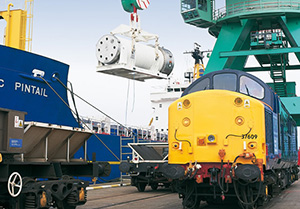Safety
Guided by safety standards developed by the International Atomic Energy Agency and overseen by formal regulatory bodies, the industry takes its responsibility to protect people and the environment very seriously.
Beyond nuclear plants’ industrial and radiological safety systems, great care is taken in transportation practices and security measures.
Transportation

The primary assurance of safety in transporting spent nuclear materials is the construction of highly specialized packaging/shipping containers. They are manufactured and rigorously tested against exacting international standards. Containers holding spent fuel during transportation are designed to ensure shielding from radiation and containment of waste, even under the most extreme accident conditions.
Since 1971, there have been more than 20,000 safe shipments of highly radioactive used fuel and high-level wastes over more than 30 million kilometres (or about 19 million miles) with no property damage or personal injury, no breach of containment, and very low radiation dose to the personnel involved.
Security and non-proliferation
Spent fuel is kept in secure nuclear power facilities, which are among the most highly protected industrial facilities in the world. All spent fuel materials are closely inventoried, tracked and closely monitored. The characteristics of the fuel itself, the multi-barrier approaches to shielding and well-trained and equipped security forces would make it extremely unlikely any intruder could access the material.






